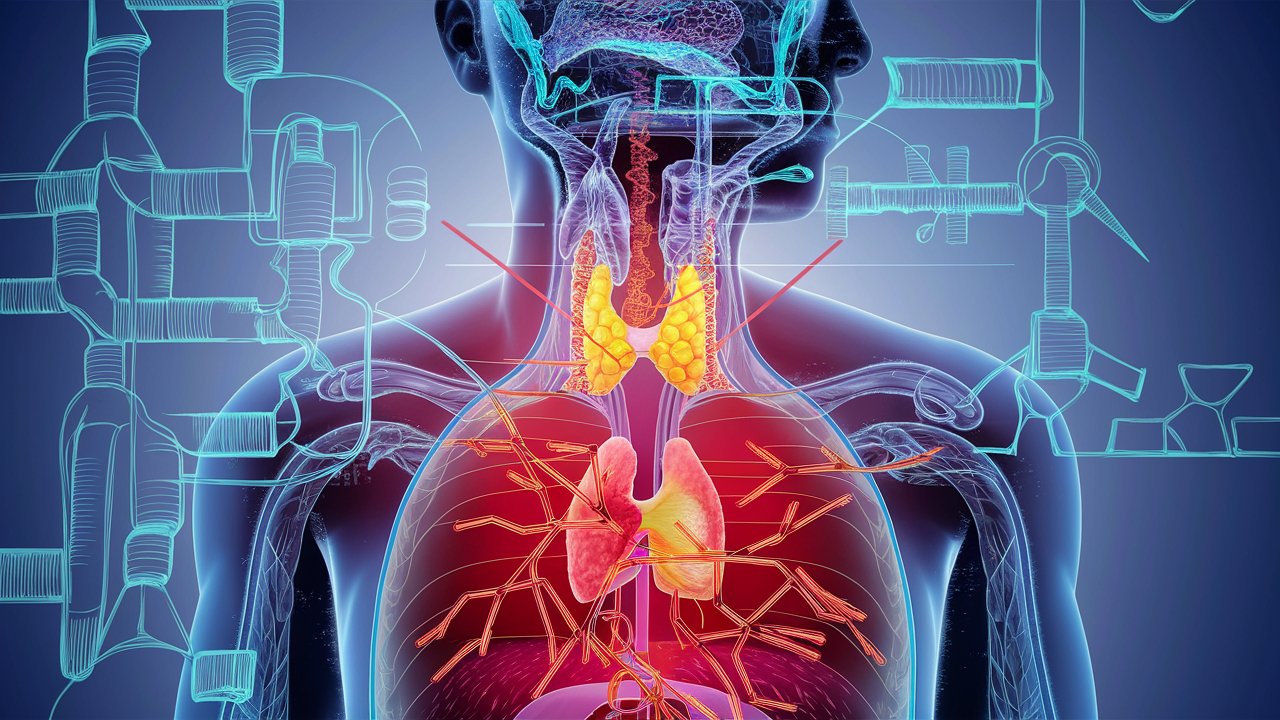
Euthyroid Sick Syndrome (ESS) is a condition where thyroid function tests are abnormal, yet the thyroid gland itself is not dysfunctional. This syndrome often appears in patients with severe illnesses, trauma, or stress. ESS can be confusing because it mimics thyroid disorders, but the root cause lies elsewhere. Understanding Euthyroid Sick Syndrome is crucial for proper diagnosis and treatment, as mistaking it for a primary thyroid issue can lead to unnecessary interventions. This article will explore 25 essential facts about ESS, shedding light on its causes, symptoms, and management. Whether you're a medical professional or just curious, these insights will help you grasp the complexities of Euthyroid Sick Syndrome.
What is Euthyroid Sick Syndrome?
Euthyroid Sick Syndrome (ESS) is a condition where thyroid function tests are abnormal, yet the thyroid gland itself is not dysfunctional. This syndrome often occurs in patients with acute or chronic systemic illnesses.
-
ESS is also known as Non-Thyroidal Illness Syndrome (NTIS). This name highlights that the thyroid gland isn't the primary issue.
-
ESS is common in hospitalized patients. Many patients in intensive care units show signs of this syndrome.
-
ESS can affect both adults and children. It doesn't discriminate by age, making it a widespread concern.
-
ESS is often seen in patients with severe infections. Conditions like sepsis can trigger this syndrome.
-
ESS can be triggered by chronic diseases. Long-term illnesses such as heart failure or liver disease are common culprits.
Symptoms and Diagnosis
Identifying ESS can be tricky since its symptoms often overlap with those of the underlying illness.
-
ESS symptoms are non-specific. Fatigue, weight changes, and altered mental status are common but vague.
-
ESS is diagnosed through blood tests. Abnormal levels of thyroid hormones like T3, T4, and TSH are key indicators.
-
Low T3 levels are a hallmark of ESS. This is often the first abnormality detected.
-
TSH levels can be normal or low. Unlike primary thyroid disorders, TSH isn't always elevated.
-
ESS can mimic hypothyroidism. This makes accurate diagnosis essential to avoid unnecessary treatments.
Causes and Mechanisms
Understanding what triggers ESS helps in managing it better.
-
Inflammation plays a significant role in ESS. Cytokines released during illness can alter thyroid hormone levels.
-
ESS is linked to starvation and malnutrition. Poor nutritional status can exacerbate the syndrome.
-
Medications can influence ESS. Drugs like steroids and dopamine can affect thyroid function tests.
-
ESS involves altered hormone metabolism. The body changes how it converts and uses thyroid hormones during illness.
-
ESS can be a protective mechanism. Lower thyroid hormone levels may help the body conserve energy during severe illness.
Treatment and Management
Managing ESS focuses on treating the underlying illness rather than the thyroid abnormalities.
-
Treating the underlying illness is crucial. Addressing the primary disease often normalizes thyroid function.
-
Thyroid hormone replacement is usually not recommended. Supplementing thyroid hormones can sometimes do more harm than good.
-
Nutritional support can help. Ensuring adequate nutrition may improve thyroid function in ESS patients.
-
Monitoring is essential. Regular blood tests help track changes in thyroid hormone levels.
-
Consulting an endocrinologist can be beneficial. Specialists can provide tailored advice for managing ESS.
Prognosis and Long-term Outlook
The long-term outlook for patients with ESS varies depending on the underlying illness.
-
ESS usually resolves once the illness is treated. Thyroid function often returns to normal after recovery.
-
Chronic illnesses can prolong ESS. Patients with ongoing health issues may experience longer-lasting thyroid abnormalities.
-
ESS does not typically cause permanent thyroid damage. The thyroid gland itself remains healthy.
-
Regular follow-up is important. Continuous monitoring ensures that thyroid function returns to normal.
-
Awareness of ESS can improve patient outcomes. Understanding this syndrome helps healthcare providers manage it more effectively.
Final Thoughts on Euthyroid Sick Syndrome
Euthyroid Sick Syndrome (ESS) is a complex condition affecting thyroid function during illness. Understanding ESS helps in distinguishing it from primary thyroid disorders. Patients with ESS often show abnormal thyroid hormone levels, yet their thyroid gland functions normally. This syndrome usually resolves once the underlying illness is treated. Awareness of ESS is crucial for healthcare providers to avoid unnecessary thyroid treatments.
Recognizing ESS can prevent misdiagnosis and ensure appropriate care. It's essential to monitor thyroid function in critically ill patients but remember that abnormal results might not indicate a thyroid problem. Proper diagnosis and management of the underlying illness are key to resolving ESS.
By staying informed about ESS, both patients and healthcare providers can make better decisions, leading to improved outcomes. Knowledge is power, especially when it comes to complex medical conditions like Euthyroid Sick Syndrome.
Was this page helpful?
Our commitment to delivering trustworthy and engaging content is at the heart of what we do. Each fact on our site is contributed by real users like you, bringing a wealth of diverse insights and information. To ensure the highest standards of accuracy and reliability, our dedicated editors meticulously review each submission. This process guarantees that the facts we share are not only fascinating but also credible. Trust in our commitment to quality and authenticity as you explore and learn with us.


